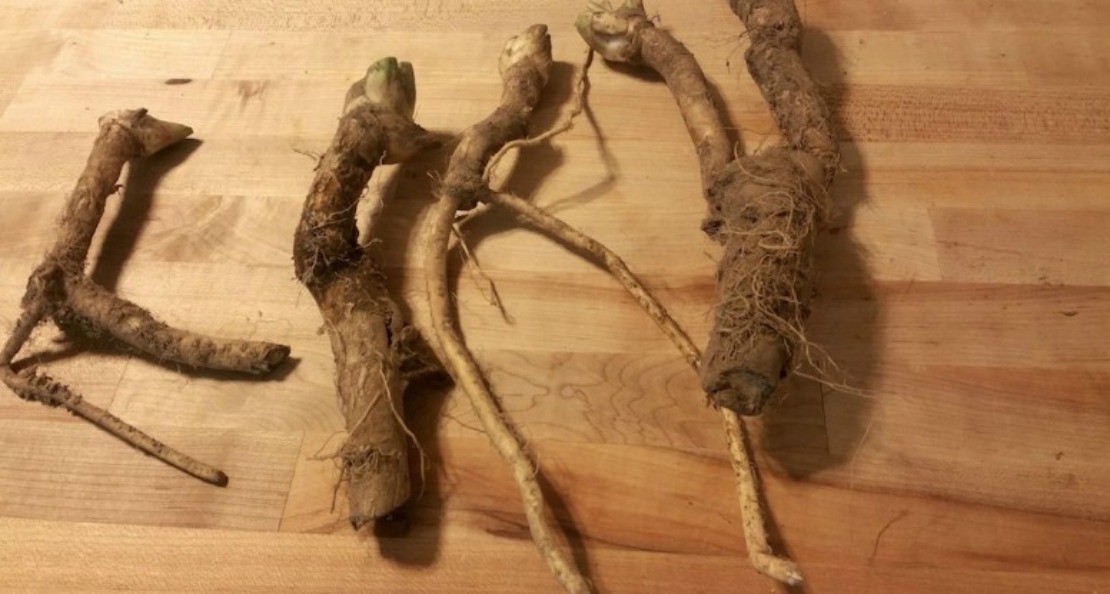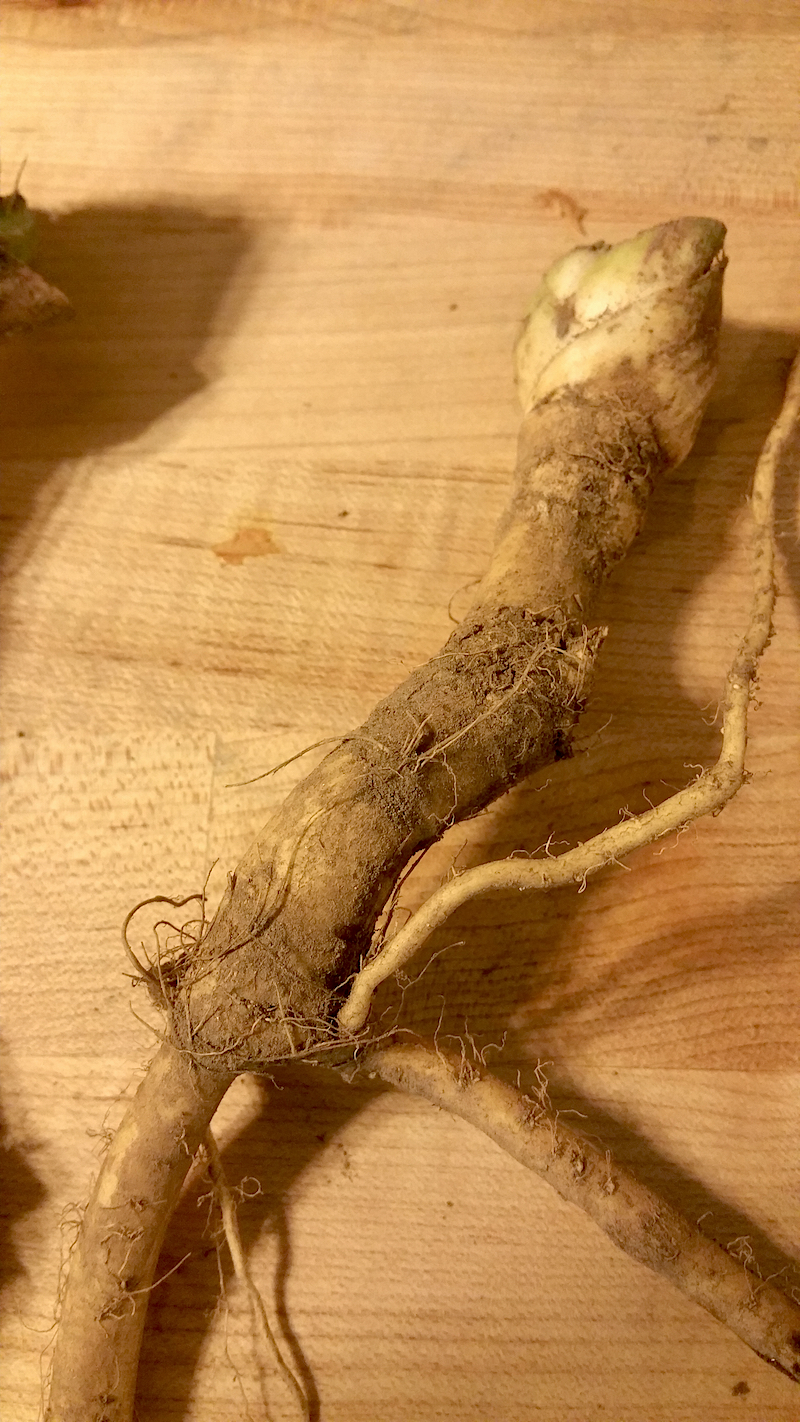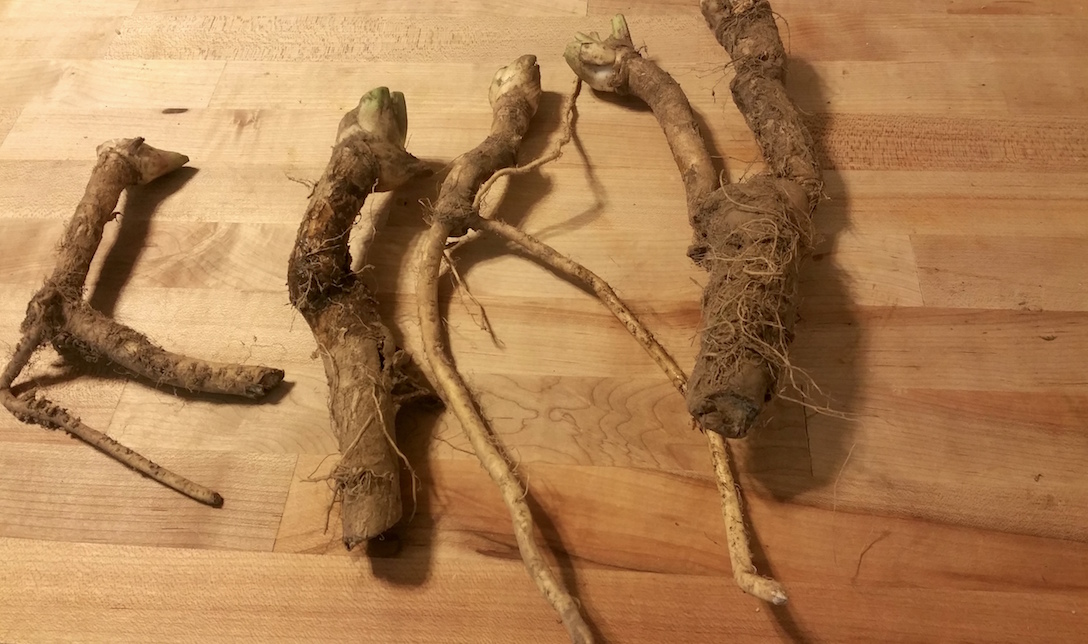
The Horseradish Plant: Harvesting, Processing & Uses
Fall is fast approaching, and with it comes the harvesting of roots. And the horseradish plant is high on our list! For those of you who regularly grow, harvest, process, and enjoy horseradish, I hope you pick up a new tip or two in this article. If you’re new to horseradish harvesting, I hope I can inspire you to get started!
Horseradish is generally said to be a Zone 5 plant, however, sources are now citing it as a Zone 4 (Knapke and Peters, 2008). In my part of the country, we’re a solid zone 4 and we have not problems even with our cold winters.
Horseradish is in the Brassiaceae (formerly the Cruciferae) family or mustard family. This family is well known as a food crop group and has about 37 genera and over 3,000 species. Some of horseradish’s cousins include radishes, mustards, Brussels sprouts, kohlrabi, bokchoy, and arugula.
The leaves are broad, usually three to four feet tall in our area. They somewhat resemble a curly dock, but on steroids. Break off a piece of the leaf and sniff it – horseradish is easily identified. In Midsummer, the plant has delicate yellow/white flowers.

Propagation usually occurs by simply leaving a piece of the root in the soil after harvesting. Many of us have heard stories about someone who wanted to rid themselves of the plant and tilled it all under, only to be overwhelmed the following year by solid horseradish! If you want to weed out horseradish, tiling is not recommended since this can actually encourage growth! Horseradish can become invasive, so plant it with that in mind.
Horseradish is one of those plants that need to have the soil very worked prior to planting. The taproot can grow up to two feet in optimal conditions, although one foot is average, and less in unworked clay soil. We till about twelve inches down and use compost in the soil at the same time. We then place the root pieces in it and cover (about 18” apart). An older farmer told me to leave the tilled soil sit for 24 hours prior to planting. I have tried this, but haven’t notice any difference. Some folks plant their horseradish in the spring and treat it like an annual. If you do this, I suggest working the soil in the fall so there’s not a lot to do in the spring but plant. I have not had much luck with purchased dried root starters sold in garden stores, so I prefer to replant my roots in the fall, sometimes trading with other horseradish enthusiasts.
Excess fertilizer can make the root tough and less tasty, so fertilize the soil, not the plant during the growing season.
If you have large, deep containers, this also makes a nice patio plant with benefits in the fall.
The Lore
In Greek mythology it is said that the Oracle of Delphi told Apollo that horseradish was worth its weight in gold.
Many believe horseradish is one of the five bitter herbs of the Jewish Passover.
According to the Horseradish Information Council (www.horseradish.org), the plant has been mentioned in history for about 3,000 years. As most other plants, horseradish had multiple uses: as a food, an aphrodisiac, for coughs and colds, and aches and pains.
It was brought to North America by the colonists and eventually made its way to the Midwest, and specifically Collinsville, Illinois, which has become the “Horseradish Capital of the World.” An annual festival held in Collinsville celebrates all aspects of horseradish. If you live in the area, information is available at www.horseradishfestival.net. (Next year’s festival is scheduled for 3 – 5 June 2016.)
The Lure
Horseradish is easily grown and made into the condiment many of us enjoy. If you make fire cider on a regular basis, you may want to grow your own organic horseradish; it is one of the main ingredients.
The Harvest
We harvest in the fall after a few good hard frosts. Some say it’s ready when the leaves all die back, but a friend of mine was raised on a large commercial horseradish farm not far from here, and during an interview, he told me that’s what they did – harvest 1 – 2 years old plants. After that they can get woody, hallow, or discolored. (You want white to cream colored roots.) Horseradish grows a lot during late summer and early fall – so postponing the harvest means larger roots. My grandfather used to store the root and other root foods in the ground in layers during the winters in Pennsylvania, digging it up as it was needed.
If you have tilled the soil prior to planting correctly, the harvest will be easier. Dig with a shovel about eight inches around the plant, being careful not to damage the root. Finish the process by hand. If possible, you’d like an 8 – 10” unbroken root. We have clay so ours are about 6 – 8”.
Place harvested roots in a paper bag and in the refrigerator until you are ready to process it. Ideally this should be done the same day. Don’t wash them until you’re ready to process them and then scrub them with a brush.

Tips for Processing Horseradish
The first thing to do is take off any and all makeup on your face.
The second thing to do is open all doors and windows if you’re working inside. If you’re working outside, make sure it is also well ventilated.
Have all your equipment set up and ready to go. (Bowls, grinders, vinegar, wooden spoons and sterilized glass jars.)
Peel the outer “skin” from the washed root and cut away small stray roots. We cut the root into small pieces that will make the grinding of them much easier. These can be hard roots and I’ve known more than one food processor and Kitchen Aid that were broken by trying to process a big hard root.
When you cut into the horseradish, it releases the pungent smell it is famous for – a compound called isothiocyanate. This compound is released into the air when it is cut or crushed. This can literally take your breath away. If you are inside, you may need to step outside occasionally.
Some people grind their horseradish in water and then strain it well and add the vinegar. Others grind it right in the vinegar. The coarseness of the grind is up to you. We make ours somewhat course, but those we give as gifts are more finely ground.
The hotness of the finished horseradish product is determined by how long you wait until you add your vinegar – if you like it very mild, grinding in vinegar might be for you. If you like it hotter, wait several minutes and then add your vinegar. We like ours hot so we wait for several minutes before adding the vinegar. Time will diminish the hotness, so we always start a little hotter.
You can use whatever vinegar you prefer, white wine vinegars, apple cider vinegar, or white vinegar. Some people add a pinch of salt and/or some freshly squeezed lemon juice. Once you have it mixed, put it in sterilized jars and store in the refrigerator.
Some common uses include adding it to catsup for shrimp sauce (as hot as you want it), adding it to mashed potatoes, egg salad, potato salad, deviled eggs, and biscuits. Start with small amounts, you can always add more. Of course, the traditional use is with roast beef.
Don’t forget to save a couple of good roots for your fire cider (fire cider recipe here).
Nutritionally it is very high in chromium, magnesium, phosphorus, potassium, riboflavin, vitamins A and C (Pederson, 2011).
Horseradish is a fun crop to grow. Once established it requires minimal care and high benefits. There’s still time this year to find a friend with some roots and get some in the ground for next year!
REFERENCES
Bremness, Lesley. (1988). The Complete Book of Herbs, 1994, London, England, Viking Studio Books.
Herb Society of America. (2011). Essential Guide to Horseradish, Kirtland, Ohio. www.herbsociety.org
International Herb Association. (2011). Horseradish. Cassville, Missouri: Litho Printers & Bindery.
Knapke, Debra & Peters, Laura. (2008). Herb Gardening for the Midwest, Auburn, WA: Lone Pine Publishing.
Pederson, Mark. (2011). Nutritional Herbology, Warsaw, IN: Whitman Publications.








